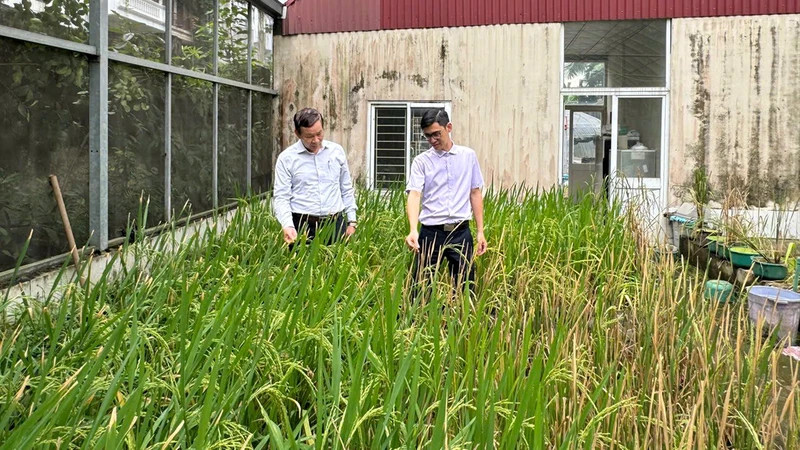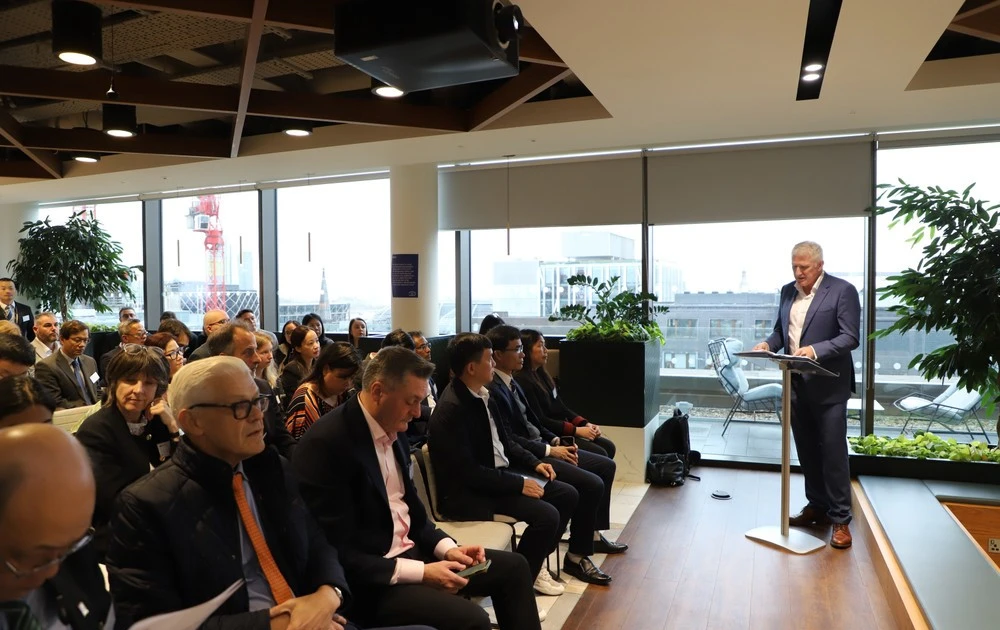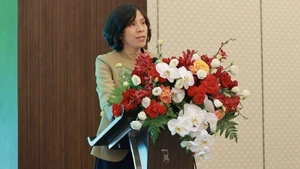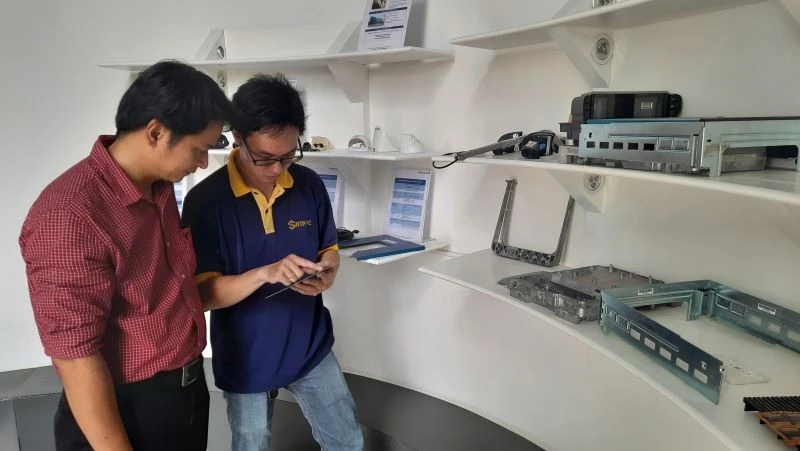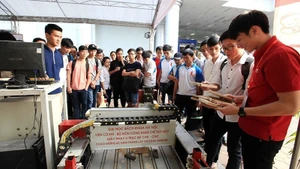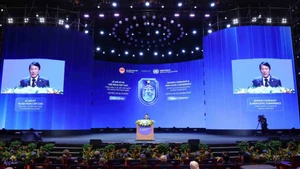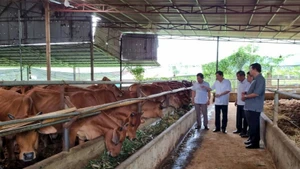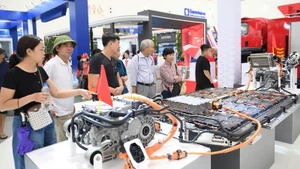Before 1987, the conservation of genetic resources was carried out, but efforts were scattered. During the period 1987-2010, the State Committee for Science and Technology (now the Ministry of Science and Technology) issued temporary regulations on the management and conservation of genetic resources of plants, animals, and microorganisms.
Over the past 10 years, the State has issued a relatively complete legal framework related to the conservation, exploitation and use of plant, animal and microbial genetic resources.
In September 2015, the prime minister issued Decision 1671 approving the Programme for Conservation and Sustainable Use of Genetic Resources to 2025 with orientation to 2030. To implement this, the Ministry of Science and Technology has issued management documents and approved a framework project for genetic resource conservation tasks.
The number of collected genetic resources has increased rapidly since 2010, especially since the issuance of Decision 1671 mentioned above; in which, the genetic resources of agricultural crops have increased the most, from 9,000 (in 2010) to 47,772 genetic resources (in 2023); forestry plants have increased from 60 to 5,768 genetic resources; medicinal plants from 500 to 7,039 gene sources; livestock increased from 55 to 891 gene sources; and aquatic products from 75 to 391 gene sources and microorganisms from 18,770 to 19,050 gene sources.
Scientists have initially evaluated over 55,800 gene sources, and detailed evaluation of over 14,100 gene sources. The detailed evaluation of plant gene sources focuses on the ability to resist pests and adverse environmental conditions, and analyse the quality of gene sources.
Typically, the Plant Resources Centre has evaluated and restored three local coloured rice varieties with great potential and outstanding characteristics. The research team has coordinated with enterprises to build a model of linking rice production to bring products to the market.
The plant conservation network system has exploited and developed hundreds of indigenous plant genetic resources.
With medicinal plant genetic resources, scientists have initially evaluated 1,531 genetic resources belonging to 884 species that are being preserved and conserved, focusing on detailed evaluation and completion of data on biological and agronomic characteristics of 500 medicinal plant species.
Many modern technologies and techniques have been applied to evaluate some genetic resources, such as Ngoc Linh ginseng genetic resources, whose genome has been studied and decoded. At the same time, medicinal plant conservation garden models have been built in Sa Pa (Lao Cai), Tam Dao (Vinh Phuc), Ba Vi (Hanoi), and Dong Van (Ha Giang).
From the preserved medicinal gene sources, up to now, more than 50 medicinal species have been exploited and developed, and some species have been commercialised. Many gene sources have been selected and are being developed on a production scale, building large-scale planting areas such as Ngoc Linh ginseng, wild ginseng, ginseng, seven leaves one flower, and red polygonum multiflorum.
With the aquatic gene source, scientists have preserved and kept 391 gene sources of nearly 80 aquatic species with more than 6,000 individuals. Some gene sources have been and are being used in exploitation and development programs such as: green Ram fish, Anh Vu fish, and Huynh De crab. Some gene sources are providing raw materials for breeding programs that bring high economic value such as: tra fish, green-legged shrimp, and tilapia.
One of the very successful gene sources preserved for selective breeding is carp, which has created a hybrid generation with a growth rate increased by 21%. For tilapia, the NOVIT4 strain is registered and supplied to all provinces nationwide as parent fish to produce seeds to meet the needs of commercial farming.
The tasks of research on conservation and sustainable use of genetic resources have brought hope to scientists, managers, especially people when witnessing the restoration of native plant and animal varieties, put into production and trade.
To achieve the goals of the National Strategy on Biodiversity to 2030, with a vision to 2050, it is necessary to increase scientific and technological resources to conserve and sustainably use genetic resources, contributing to the conservation of biodiversity and protection of the country's resources.
Luu Quang Minh, Deputy Director of the Department of Science and Technology of Economic and Technical Sectors under the Ministry of Science and Technology, said that from 2016 to now, the work of collecting, preserving, restoring, storing and developing genetic resources has been implemented in a synchronous and continuous manner from the central to local levels.
The implementing units are mainly research institutes, universities and have the participation of enterprises. Up to now, 200 tasks on exploiting and developing genetic resources have been deployed, divided equally among all fields such as forestry, cultivation, animal husbandry and currently 83 tasks have been completed.
Genetic resources have been exploited and developed on preserved genetic materials. Initial preliminary assessments show that genetic resources all have economic value, creating jobs for people. Exploitation and development have achieved many results, contributing to restructuring the agricultural sector or changing the export structure.
Professor, Dr Chu Hoang Ha, Vice President of the Vietnam Academy of Science and Technology, said that following the development and integration trend, Vietnam aims to promote the development of a green economy and a circular economy.
Therefore, in implementing the Programme for Conservation and Sustainable Use of Genetic Resources for the period 2025-2030, it is necessary to continue to prioritise the development of in-depth basic research on genetic resources (digitising genetic resources according to international standards, maintaining conservation, registering intellectual property) in combination with traditional research on animal, plant and microbiological genetic resources.
In the coming time, the conservation and development of genetic resources needs to continue to be maintained and further promoted. There needs to be a synchronous policy in increasing State investment, sharing genetic resources among genetic fund networks, among units, individuals, organisations, and among enterprises.
In addition, research and conservation of genetic resources need to have the most suitable mechanism so as not to lose genetic resources but also not to be too burdensome in quantity; there needs to be an early mechanism for handing over rare genetic resources, specific operating regulations for the gene pool network, specific mechanisms for special genetic resources, to preserve, evaluate, exploit and sustainably develop genetic resources in Vietnam.
